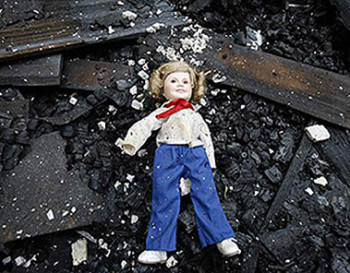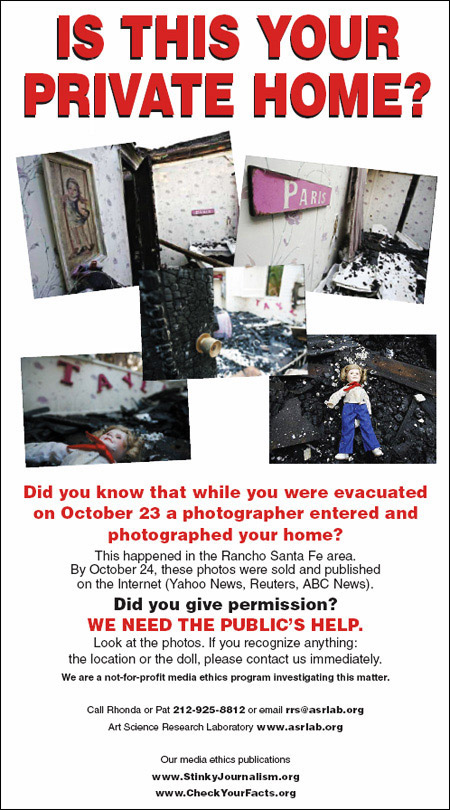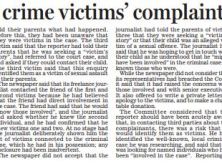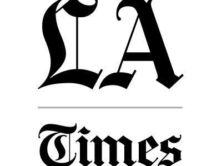
The Reuters headline read “A doll lies in destroyed home near Rancho Santa Fe near San Diego” dated 24 Oct 2007.
“A doll lies in the charred rubble of a home in the Rancho Santa Fe area of San Diego, California” and “The charred remains of a girl’s bedroom are seen through a shattered window of a home in the Rancho Santa Fe area of San Diego, California October 23, 2007.” were among the captions under Reuters wildfire photographs published on the Reuters, Yahoo! News and ABC News Web sites.
The photos offer viewers undeniable proof that Reuters photojournalist Mario Anzuoni had entered a private home to snap his photos. This particular homeowner would most likely have been evacuated on the Oct. 22, 2007, and not been allowed to return until Oct. 25.
By Oct. 24, it was too late to protest. Reuters and Yahoo! News had published the photos online.
So how could this family possibly have authorized Reuters entry, let alone the publication of these photographs?
The ethical issues for the media here, as well as laws in all 50 United States, are clear-cut. In practice, though, they can be forgotten during the adrenaline rush of covering disasters like Hurricane Katrina and the California wildfires.
Are Reuters reporters somehow immune to private property restrictions? Are Reuters employees free to enter, without knowledge or consent, and take photos of personal possessions during an emergency, when victims are most vulnerable? No.
At least five photographs taken by Reuters photojournalist Mario Anzuoni were potentially illegally obtained while the Rancho Santa Fe homeowners were evacuated. Homeowners were generally not let back until Oct. 25, 2007.
In the case of the doll photos, there was no clear news imperative to enter this little girl’s bedroom. All of the information gleaned from inside this house – images of destruction, charred rubble, and order amid chaos – could have been captured legally from the street.
Based on this information, we presented some straightforward questions to Reuters:
-
- Did Anzuoni enter “the charred remains of a girl’s bedroom” on October 23rd with the permission of the home’s evacuated owners?
-
- Where was the house located?
- Did Reuters, Anzuoni’s employer, begin on Oct. 24, without the evacuated owner’s authorization, to sell and publish these photos?
Reuters thus far has refused to answer our questions. We wrote Reuters numerous times, beginning with two e-mails on Nov. 2, 2007 and a Nov. 3 query posted on Reuters’ “The Good, the Bad & the Ugly” (GBU) blog.
With no answers, we can only assume that Reuters did not have permission from the owners to enter on Oct. 23, or to sell and publish the photographs by Oct. 24.
Reuters needs to fess up and make transparent any ignorance or violations of state laws regarding Anzuoni’s apparent private property trespass. Reuters also needs to reassure the public that such violations of privacy will not happened again, and such conduct by employees, according to policy, will not be tolerated by Reuters.

Art Science Research Laboratory’s full page display advertisement ran in the North County Times, a local daily newspaper, that serves the Rancho Santa Fe area of California.
In an attempt to notify the family, and learn where and how the photos were taken, we have posted full page color ads in a local newspaper, the North County Times, which is the publication nearest to the alleged location of the fire-doll house. A bigger regional newspaper, The San Diego Union Tribune, is our next planned ad venue.






